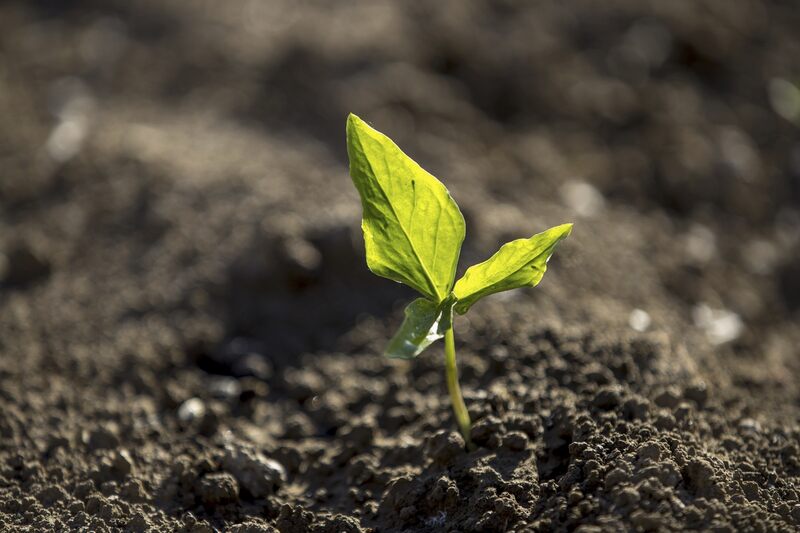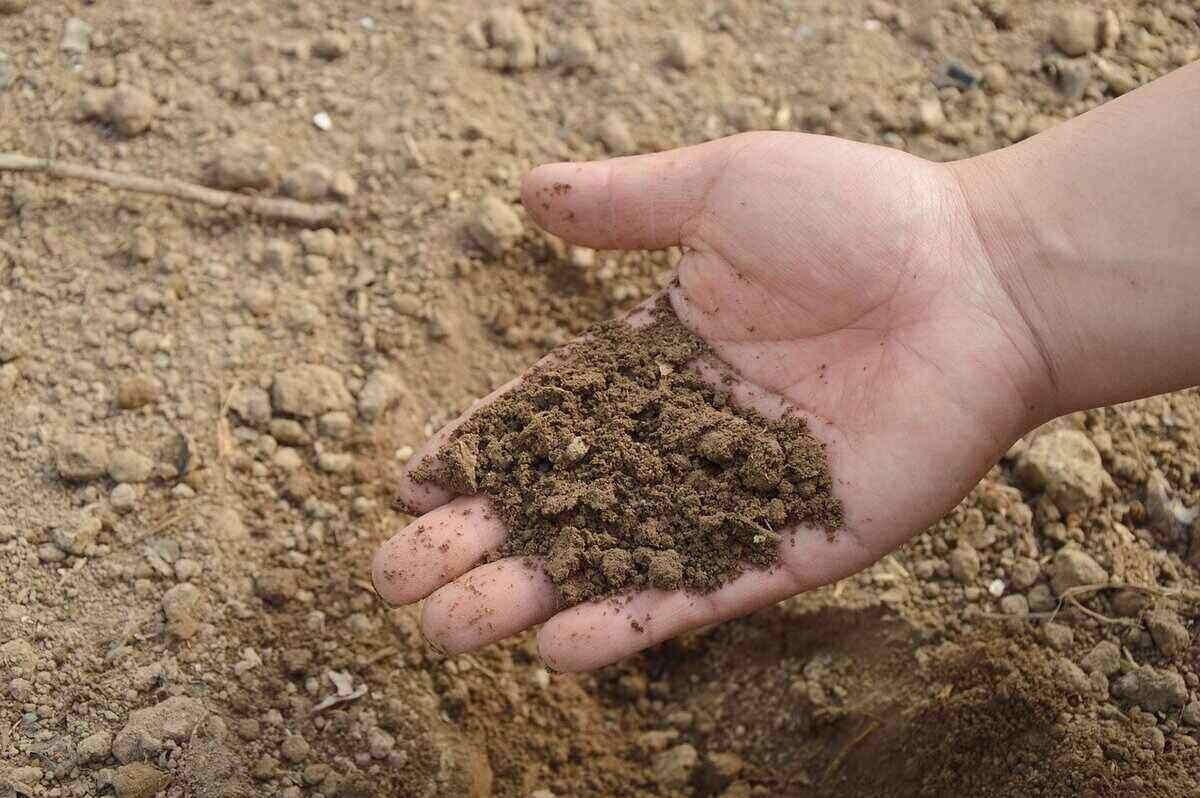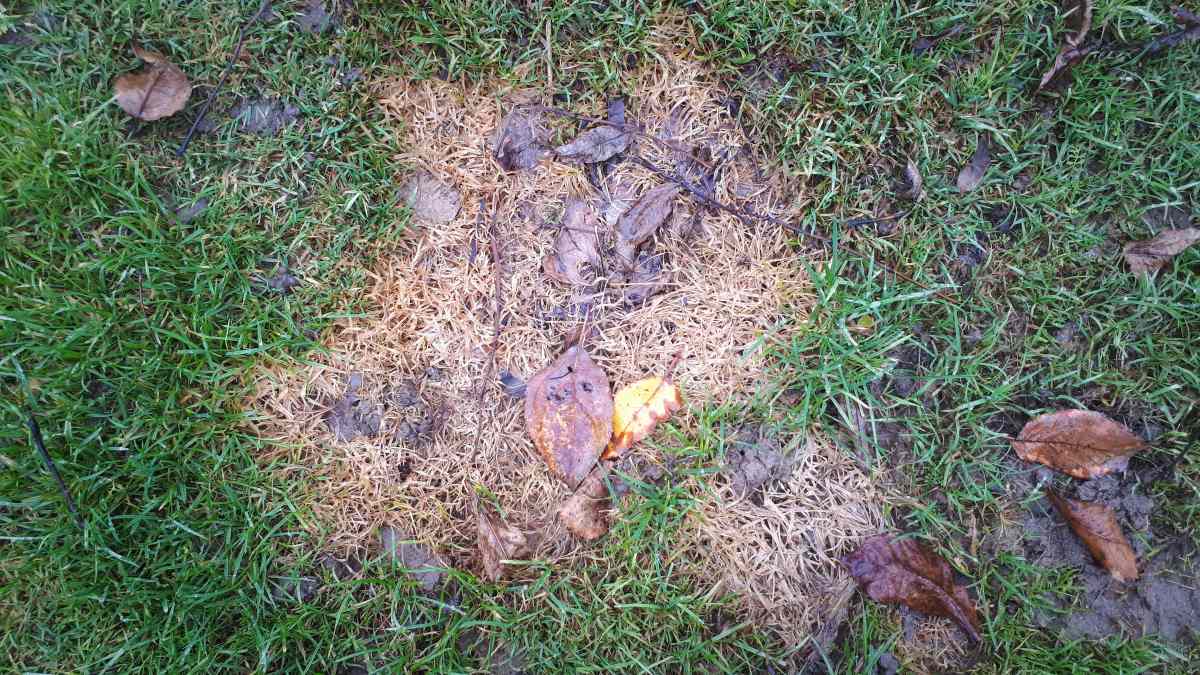
Dirt is dirt, right? It gets under your nails, it gets tracked into your house, and it creates a lot of laundry. Most people don’t give topsoil a second thought other than to grumble about the mess it makes. But some wonder which soil is the best soil for grass growing. The answer? Friable loam. It’s the ideal lawn soil. We’ll explain what it is and how to get it.
But your soil deserves respect. It serves a vital purpose. It gives plants, trees, and grass a place to put their roots, and there are many different types of soil. As a homeowner, understanding the soil you have in your yard can really help you with your gardening, landscaping, and lawn care.
If you know your soil type and how it acts under different conditions, you can amend or manage it so your grass and other plants have enough air, water, and nutrient movement through the root zone. Probably as clear as mud, but keep on reading to get a better understanding.
What Is Soil?
According to the Oxford Dictionary, soil is “the upper layer of earth in which plants grow, a black or dark brown material typically consisting of a mixture of organic remains, clay, and rock particles.”
More simply, soil is a mixture of weathered rock, minerals, and organic materials originating from living organisms. Over time, it has slowly built up layers that cover the surface of the earth, serving as a medium for vegetative growth.
Farmers and engineers have closely studied the native topsoil they are working with to determine its composition and structure. This gives them insight into how a specific soil type will behave. While you don’t need to study your soil as closely as a farmer, a basic understanding of what’s under your feet will help you achieve a healthy soil — and grow healthy plants in it.
Soil Types, Textures

Soil is made up of three different types of particles that are classified based on their size: sand, silt, and clay. This combination/ratio of particle sizes makes up what we know as the texture of the soil. The texture determines how the soil looks and feels.
- Sand particles measure 2.0 to 0.05 mm, the largest of the three soil types. They are the least-weathered and fairly coarse. Sand provides good aeration and drainage. However, it can be problematic for growing plants if the water drains too quickly.
- Silt particles range in size from 0.05 to 0.002 mm and almost feel like flour if you were to hold pure silt in your hand. When water is added to silt, the silt does a fairly good job of holding onto the water and will feel slick and smooth.
- Clay has the finest-grained particles, measuring less than 0.002 mm in size. It holds onto water tightly, impeding drainage and waterlogging the root zone of plants. When it dries, it can create extremely hard layers that are hard for roots to move through.
The textural class of soil is determined by the relative amounts of sand, silt, and clay it contains. There are 12 different textural categories that fit into what is known as the soil texture triangle:
- Clay
- Sandy clay
- Silty clay
- Sandy clay loam
- Clay loam
- Silty clay loam
- Sand
- Loamy sand
- Sandy loam
- Loam
- Silt loam
- Silt
For grass and most other plants, a medium loam, with proportions (by weight) of 40% sand, 40% silt, and 20% clay is the ideal growing material. That mix holds nutrients and moisture but lets excess water run through.

4 Ways to Determine Your Soil Texture
There are numerous ways to determine your soil texture, ranging from simple methods you can DIY at home to laboratory tests that you will need to pay for.
1. Watch the Water

Look at the physical characteristics of your soil, especially anything that stands out as being abnormal. These physical signs can provide some clues to the soil texture.
- Does water drain quickly through the soil after irrigating or a natural rainfall event? If so, it has a higher sand content.
- Does water pool on the surface of the soil after irrigating or a natural rainfall event? If so, it has a higher clay content.
- Does the soil develop big cracks when it dries out? If so, it has a higher clay content.
- Does the soil feel gritty and coarse in your hands? If so, it has a higher sand content.
2. Dig Your Fingers In
You can get an approximate determination of the soil texture by following what is known as the soil texture by feel and “soil ribbon” technique. The directions are more in-depth but the overall idea is you create a ball of moist soil in your hand, and by following a flow chart of simple questions, you can determine the textural classification.
The ribbon technique was one of my favorite tests to perform when I was classifying soils as a graduate agronomy student! Who doesn’t like to play with mud?
3. Try a Pro Soil Test
A professional soil test performed by a laboratory is the most accurate method, but also the most expensive. The common method employed by many soil testing labs uses a hydrometer for particle size analysis of a soil sample.
A slurry of sorts is made to disperse the soil particles and then poured into tall glass tubes. Based on their size, particles will fall out of suspension at different rates. Measurements are taken at specific times to determine the amount of sand, silt, and clay in the sample; the texture can then be determined based on the soil texture triangle.
4. Look It Up Online
The USDA’s Natural Resource Conservation Service can also generate a customized Soil Resource Report for a particular parcel of land through its Web Soil Survey.
Understanding Soil Structure
Soil structure is how all of the particles are spatially arranged. It is how the sand, silt, and clay, along with organic matter, clump together to form aggregates. The size and shape of these aggregates and how they arrange together determines how air and water move through the soil.
When soil particles aggregate, they create voids, or pores, between the individual particles. The sizes of the particles determine the voids’ sizes — that is, sandy soils typically have larger pores than clay soils.
This empty space fills with air and water, as well as plant roots, and beneficial soil microorganisms.
Soil structure influences:
- Movement of water into the soil and throughout
- Level of aeration
- Root growth ability throughout the soil
- Resistance to soil erosion
What the Best Lawn Soils Need

Photo Credit: Rawpixel
Besides the correct amount of sunlight, water, and essential nutrients, your grass needs optimum soil conditions for good growth. This means both good texture and good structure.
Good soil conditions favor:
- A strong root system
- Nutrient retention
- Adequate moisture retention
- Drainage of excess water
- Pockets for aeration
- Populations of beneficial microorganisms
When given good soil texture and structure to favor all of those aspects, your grass has all the resources it needs to thrive. Now the question is, how do I get this ideal soil for my lawn? This is where achieving friable loaminess comes into play.
Friable Loam
I’m not talking fryable as in french fries or chicken-fried steak. The term friable means the tendency of a substance to crumble easily. Friable soil has a crumbly structure ideal for the underground activity that goes along with plant growth; it is characterized by larger clods that break easily and smaller soil aggregates being harder to break.
As you can see from the textural triangle above, loam is a type of soil texture. It contains relatively balanced amounts of sand, silt, and clay. The ideal soil, friable and loamy, reaps the benefits of each different soil type with few of their drawbacks.
How to Amend the Soil in Your Lawn
Just because your native soil isn’t ideal for growing grass seed or sod, doesn’t doom you to a sickly-looking lawn full of bare spots for the rest of your days. There are ways to address its shortcomings and achieve a greener lawn.
One of the challenges with improving poor soil under an established lawn is the difficulty in getting to it. Unlike the at-your-fingertips soil of a garden that you can amend any time, you can’t easily access the soil under your grass to concoct a mixture of ingredients. You have to make gradual changes over time.
A Concrete Idea to Ignore
Upon first thought, most people wonder if they can simply add more of one soil type to get their soil to the desired loam ratio. Alas, doing this will result in what closely resembles cement in your backyard and can create layers that impede water and air movement.
Instead of this idea, soil amendments that add organic matter are the best option. This works whether you have overly sandy or clayey soil.
- To start with, test the soil pH level in the lawn area. Grass plants like slightly acidic soil with a pH level of 6.5 to 7. If your soil has strayed outside those numbers, you may need to get out the spreader and add lime (to raise pH) or sulfur (to lower it).
Once you know the pH is at an appropriate level, you can begin adding organic matter such as peat moss, compost, rotted manure, and quality topsoil. - Use a power rake or dethatcher to remove thatch — the thick interlocked layer of living and dead grass plant material that accumulates at the base of the grass blades. A thin layer of thatch is both inevitable and helps make a healthy lawn. But too much — say, more than a half-inch — can reduce a lawn’s health and keep new grass from growing.
Dethatching and aerating open up the thatch layer, reduce soil compaction, and create channels through the turf to allow the organic matter to penetrate the surface and create healthy soil. - Then you can add mulch or finished compost across your lawn in a process known as topdressing.
- On an ongoing basis, practice proper mowing techniques — including the ⅓ rule, to never mow more than one-third of the grass blades at a single time. You can also mulch your grass clippings to restore nutrients to the soil.
It will take time to see the benefits of adding organic matter to your soil, but over time you’ll achieve the friable loaminess you’re aiming for!
FAQ
The majority of plants will grow well in friable soil, but there are some plants that prefer soils with a higher sand or clay content.
● Apache plume is a flowering shrub native to the rocky, clay loam or sandy loam soils found in the Southwestern U.S. and Mexico.
● Fernbush is a type of shrub with showy white flowers that grows well in either sandy or clay soils.
● Indian Hawthorn is a low-growing flowering shrub that thrives in sandy soils.
Test your lawn soil by getting an at-home pH test kit and collecting samples. You can do this by digging up some of your soil and testing it to see if you have acidic, neutral, or alkaline soil.
● Start by getting a bucket, shovel, and trowel.
● Take samples by digging a hole about six inches deep, mixing the dirt at the bottom, and collecting one cup of soil from an untampered area of your yard.
● Collecting about 10 1-cup samples will give you a more accurate reading. Dig for samples in a zigzag pattern, collecting from a new hole for each cup.
Next, you’ll want to follow the instructions on your pH kit. Soil pH tells you what minerals are heavy in your soil. Acidic soils have a low pH and have high aluminum, iron, and magnesium. Alkaline soils have a high pH and carry large amounts of phosphorus, manganese, zinc, and others.
● Once you have collected your samples and read the pH kit instructions, you’ll want to fill a test tube to the fourth line with the indicator solution before adding 1.5 grams of soil.
● Put the cap on the test tube before shaking it gently for one minute. Next, let the solution settle for 12 minutes.
● Compare the color of the sample with the pH test guide to determine your soil’s pH.
Note: Not all home test kits are the same. Always follow the given instructions when testing your soil. Wear protective gloves and eyewear when working with chemicals.
No, loam and topsoil are not the same. While loam is a category of topsoil, not every topsoil is loam. Loamy soils have a composite of sand (less than 52 %), silt (28 – 50%), and clay particles (8 – 28 %). Topsoil, generally, refers to the uppermost layer of soil in a yard or garden regardless of the amount of sand, silt, or clay that it contains.
The Grass Professionals
When you’re just starting out, lawn care can seem like an impossible task to manage well. To keep your soil healthy, make sure you are providing the proper nutrition and care that it requires. If you’re worried about taking on too much, contact a local lawn care professional near you to tackle your soil for you.
Cut out the long hours of yard work from your schedule, and get back to enjoying what you love about your yard and garden soil.
Main Image Credit: U.S. Department of Agriculture / Flickr / Public Domain




